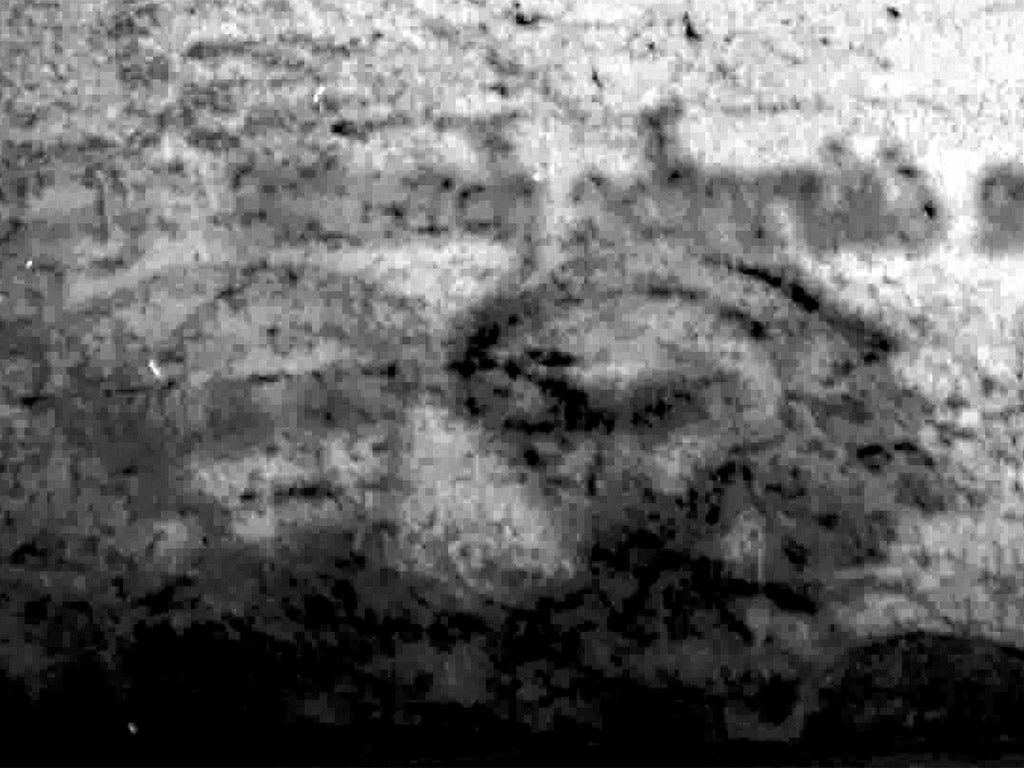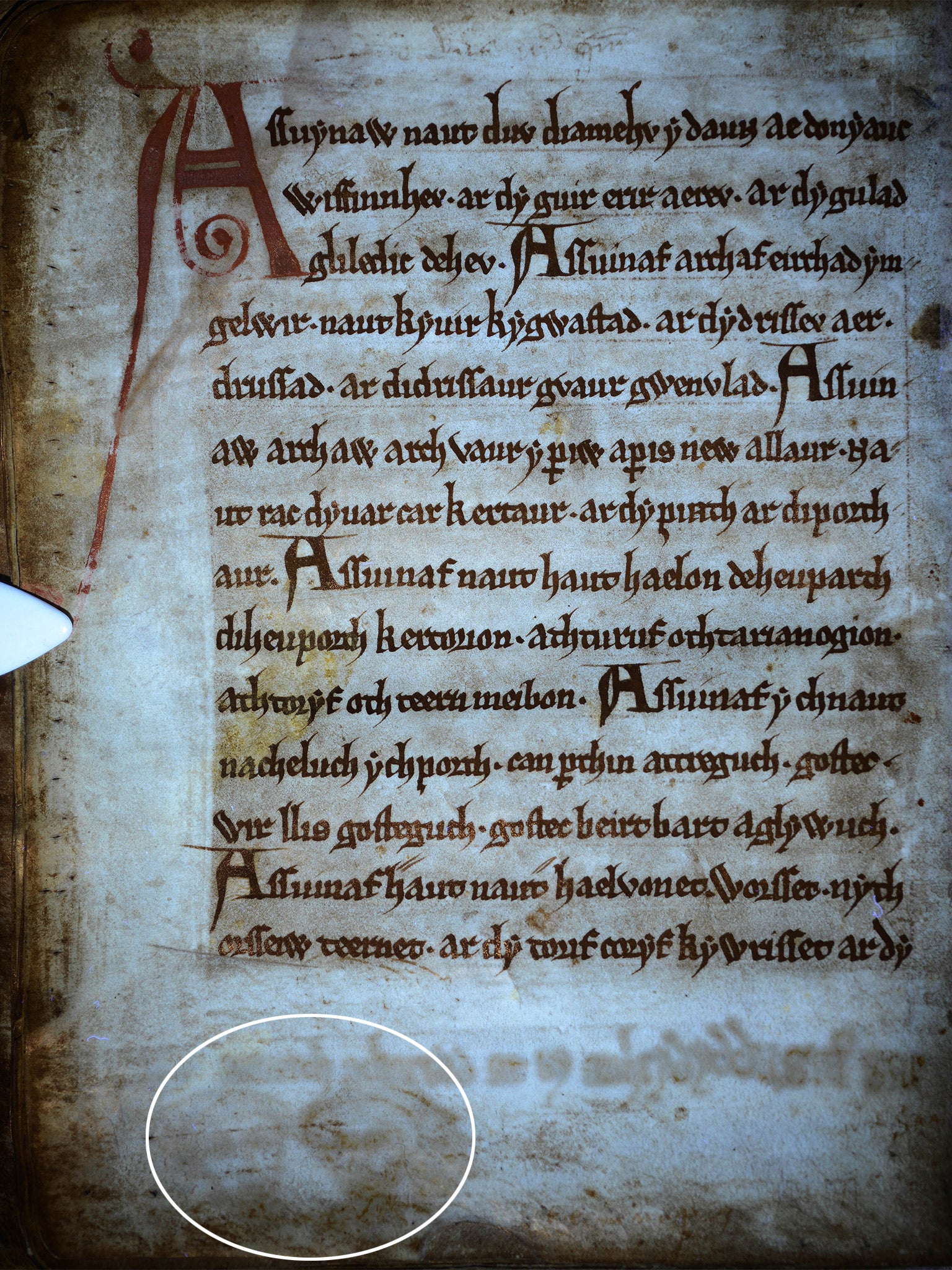The Black Book of Carmarthen: Scholars left shaken after ultraviolet light reveals ghostly faces staring at them from medieval manuscripts
Unseen for 500 years, ultraviolet light has revealed two hidden portraits in a medieval Welsh manuscript

Your support helps us to tell the story
From reproductive rights to climate change to Big Tech, The Independent is on the ground when the story is developing. Whether it's investigating the financials of Elon Musk's pro-Trump PAC or producing our latest documentary, 'The A Word', which shines a light on the American women fighting for reproductive rights, we know how important it is to parse out the facts from the messaging.
At such a critical moment in US history, we need reporters on the ground. Your donation allows us to keep sending journalists to speak to both sides of the story.
The Independent is trusted by Americans across the entire political spectrum. And unlike many other quality news outlets, we choose not to lock Americans out of our reporting and analysis with paywalls. We believe quality journalism should be available to everyone, paid for by those who can afford it.
Your support makes all the difference.Scholars researching one of the UK’s most important medieval manuscripts were left surprised if not a little shaken last year when the use of ultraviolet light revealed two ghostly faces staring out at them from one of the pages.
The discovery of the sketches – not seen since they were erased in the 16th century from the Black Book of Carmarthen – came as a “complete surprise” to the two researchers.
The book, which is held in the National Library of Wales and dates from 1250, is the earliest surviving manuscript written solely in Welsh and contains some of the earliest references to King Arthur and Merlin. Its name comes from the colour of its binding.
Professor Paul Russell, from the University of Cambridge’s department of Anglo-Saxon, Norse and Celtic, and PhD student Myriah Williams have worked on unlocking the manuscript’s secrets using different imaging techniques for three years.

Using ultraviolet light and photo-editing software, huge swathes of notes in the margins, erased more than five centuries ago, have been revealed. As well as the drawings of the faces, another important discovery is a hitherto unknown Welsh poem. A run through a database of known verse has come up with no match, suggesting it is an original work .
Professor Russell said the findings were “very exciting” adding: “Now we know this material is there, we can do a lot of things to bring it back.”
He spoke of the discovery of the sketches last summer. “We were looking at the text with the ultraviolet lamp and this pair of faces emerged in the bottom margin. It was actually quite creepy with them peering back. We thought: ‘Who are you?’”
The scholars do not know who the faces represent but dated them to the 14th or 15th century. Alongside them is an inscription that suggests the donation of the book to a family member. A few pages further on, a sketch of a fish emerged under the ultraviolet light.
Professor Russell believes the discoveries may be the tip of the iceberg and hopes it will shed new light on what early readers of the text thought.
“Although the texts are very well known, no one has really sat down and looked at the manuscript as a whole,” he added. They will continue to analyse the text with innovative techniques to unlock more of its hidden secrets.
The scholars started their research after shadows on the pages suggested that material had been erased. Professor Russell said: “We thought maybe there were ways of doing things by enhancing and changing the spectrum.
“It’s a very well-known manuscript in a Welsh context but by bringing new things to it 750 years on is brilliant. People asked: ‘Hasn’t everything been done?’ Well, no.”
Experts believe the book – which contains a collection of religious and secular poetry dating from the 9th to the 12th century – was the work of a single scribe who was probably collecting and recording material over a long period. Others then made additions.
King Arthur makes an appearance in it as a ruler who seeks to gain entrance to an unidentified court by hailing the virtues of his men.
One part of the text known as “Englynion y Beddau”, or the Stanzas of the Graves, covers the burial places of 80 warriors. Myrddin, better known in English as Merlin, appears in two poems including one that is presented as a dialogue between him and the Welsh poet Taliesin.
The book has 54 pages of vellum and was acquired by the National Library of Wales in 1904, after it was bought by the library’s founder Sir John Williams.
The scholars believe the book was likely to have been owned by someone called Jasper Gryffyth in the 16th century, and researchers believe that he was probably the man who erased the centuries of material added by previous owners.
Join our commenting forum
Join thought-provoking conversations, follow other Independent readers and see their replies
Comments